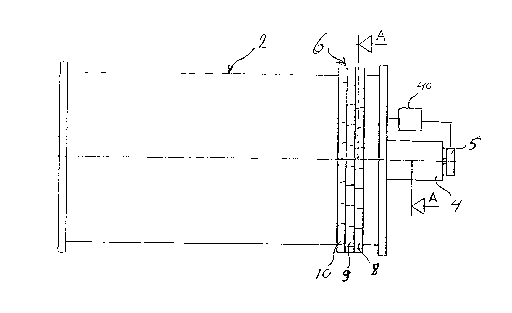Une partie des informations de ce site Web a été fournie par des sources externes. Le gouvernement du Canada n'assume aucune responsabilité concernant la précision, l'actualité ou la fiabilité des informations fournies par les sources externes. Les utilisateurs qui désirent employer cette information devraient consulter directement la source des informations. Le contenu fourni par les sources externes n'est pas assujetti aux exigences sur les langues officielles, la protection des renseignements personnels et l'accessibilité.
L'apparition de différences dans le texte et l'image des Revendications et de l'Abrégé dépend du moment auquel le document est publié. Les textes des Revendications et de l'Abrégé sont affichés :
| (12) Brevet: | (11) CA 2117946 |
|---|---|
| (54) Titre français: | DISPOSITIF DE SECURITE |
| (54) Titre anglais: | SAFETY MECHANISM |
| Statut: | Durée expirée - au-delà du délai suivant l'octroi |
| (51) Classification internationale des brevets (CIB): |
|
|---|---|
| (72) Inventeurs : |
|
| (73) Titulaires : |
|
| (71) Demandeurs : |
|
| (74) Agent: | G. RONALD BELL & ASSOCIATES |
| (74) Co-agent: | |
| (45) Délivré: | 2001-02-20 |
| (22) Date de dépôt: | 1994-10-12 |
| (41) Mise à la disponibilité du public: | 1995-04-16 |
| Requête d'examen: | 1997-10-31 |
| Licence disponible: | S.O. |
| Cédé au domaine public: | S.O. |
| (25) Langue des documents déposés: | Anglais |
| Traité de coopération en matière de brevets (PCT): | Non |
|---|
| (30) Données de priorité de la demande: | ||||||
|---|---|---|---|---|---|---|
|
Moyen de sécurité permettant d'empêcher un enrouleur de câble de tourner en survitesse, comprenant des roues à crochet parallèles qui encerclent un tambour de frein. Au niveau d'une périphérie des roues à crochet se trouvent des fentes d'arrêt dans lesquelles des moyens de verrouillage sont insérés lorsqu'une survitesse est détectée. Les fentes des roues à crochet adjacentes sont en quinconces. Ainsi, l'effet de freinage de chaque roue à crochet commence à un point différent dans le temps.
A safety means for preventing a cable drum to rotate with overspeed has parallel ratchet wheels which encircle a brake drum. At a periphery of the ratchet wheels are stopping slots wherein latching means are inserted when an overspeed is detected. The slots of the adjacent ratchet wheels are staggered. Thus the braking effect of each ratchet wheel starts at a different point of time.
Note : Les revendications sont présentées dans la langue officielle dans laquelle elles ont été soumises.
Note : Les descriptions sont présentées dans la langue officielle dans laquelle elles ont été soumises.

2024-08-01 : Dans le cadre de la transition vers les Brevets de nouvelle génération (BNG), la base de données sur les brevets canadiens (BDBC) contient désormais un Historique d'événement plus détaillé, qui reproduit le Journal des événements de notre nouvelle solution interne.
Veuillez noter que les événements débutant par « Inactive : » se réfèrent à des événements qui ne sont plus utilisés dans notre nouvelle solution interne.
Pour une meilleure compréhension de l'état de la demande ou brevet qui figure sur cette page, la rubrique Mise en garde , et les descriptions de Brevet , Historique d'événement , Taxes périodiques et Historique des paiements devraient être consultées.
| Description | Date |
|---|---|
| Inactive : Périmé (brevet - nouvelle loi) | 2014-10-12 |
| Inactive : Lettre officielle | 2010-02-26 |
| Inactive : Lettre officielle | 2010-02-24 |
| Inactive : Renversement de l'état sera réputé périmé | 2009-12-04 |
| Inactive : Paiement - Taxe insuffisante | 2009-12-04 |
| Lettre envoyée | 2009-10-13 |
| Inactive : CIB de MCD | 2006-03-11 |
| Inactive : CIB de MCD | 2006-03-11 |
| Accordé par délivrance | 2001-02-20 |
| Inactive : Page couverture publiée | 2001-02-19 |
| Préoctroi | 2000-11-29 |
| Inactive : Taxe finale reçue | 2000-11-29 |
| Un avis d'acceptation est envoyé | 2000-06-07 |
| Lettre envoyée | 2000-06-07 |
| Un avis d'acceptation est envoyé | 2000-06-07 |
| Inactive : Approuvée aux fins d'acceptation (AFA) | 2000-05-18 |
| Inactive : Dem. traitée sur TS dès date d'ent. journal | 1998-02-06 |
| Inactive : Acc. réc. RE - Pas de dem. doc. d'antériorité | 1998-02-06 |
| Inactive : Renseign. sur l'état - Complets dès date d'ent. journ. | 1998-02-06 |
| Toutes les exigences pour l'examen - jugée conforme | 1997-10-31 |
| Exigences pour une requête d'examen - jugée conforme | 1997-10-31 |
| Demande publiée (accessible au public) | 1995-04-16 |
Il n'y a pas d'historique d'abandonnement
Le dernier paiement a été reçu le 2000-09-14
Avis : Si le paiement en totalité n'a pas été reçu au plus tard à la date indiquée, une taxe supplémentaire peut être imposée, soit une des taxes suivantes :
Les taxes sur les brevets sont ajustées au 1er janvier de chaque année. Les montants ci-dessus sont les montants actuels s'ils sont reçus au plus tard le 31 décembre de l'année en cours.
Veuillez vous référer à la page web des
taxes sur les brevets
de l'OPIC pour voir tous les montants actuels des taxes.
Les titulaires actuels et antérieures au dossier sont affichés en ordre alphabétique.
| Titulaires actuels au dossier |
|---|
| KCI KONECRANES INTERNATIONAL CORPORATION |
| Titulaires antérieures au dossier |
|---|
| OLAVI JUSSILA |